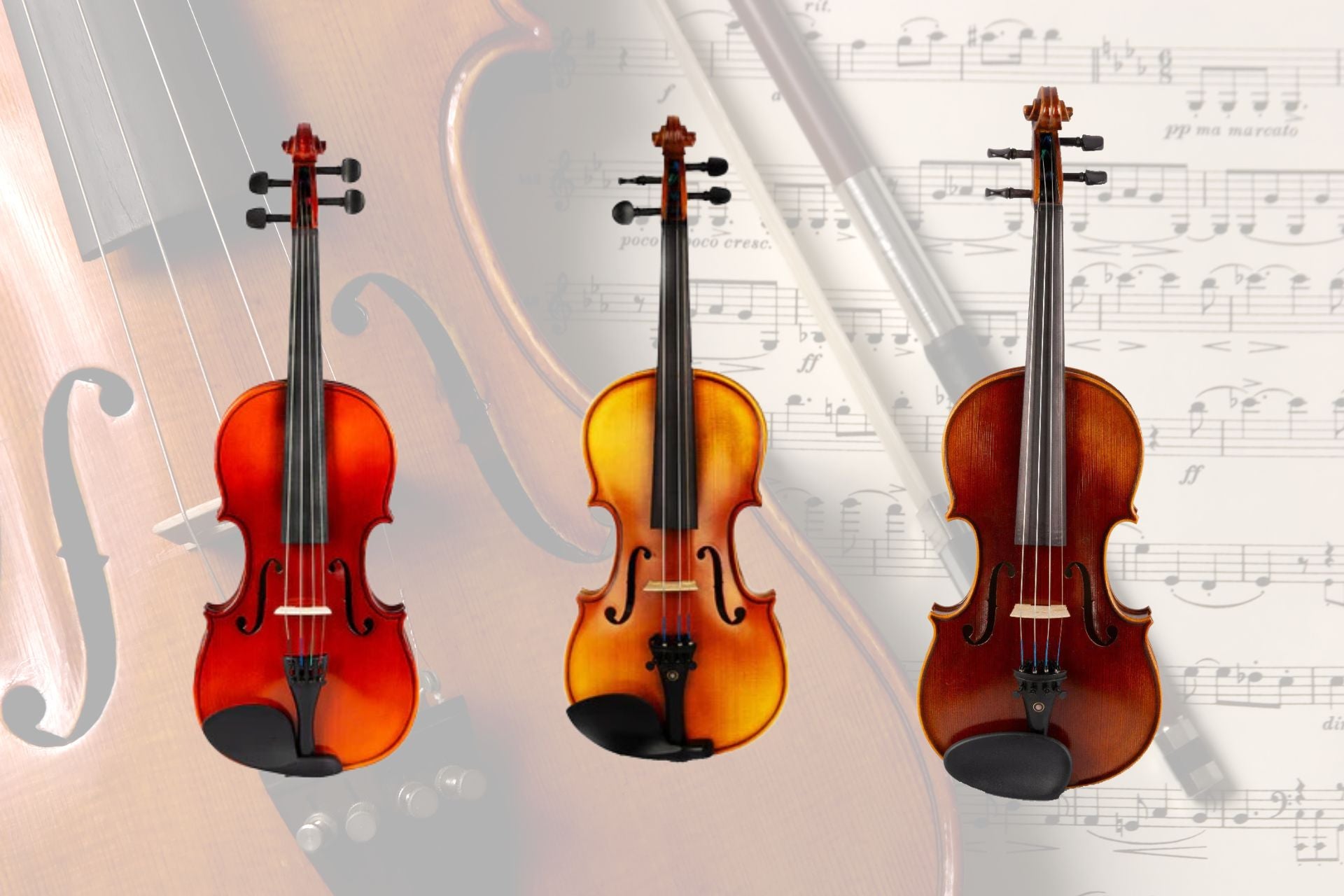General Articles
Exploring Violin Sizes: Understanding 4/4, 1/4, 3/4, and 1/2
The violin is a captivating instrument that has captured the hearts of musicians and listeners for centuries. Whether you're a beginner or an experienced player, choosing the right size violin is essential for comfort, technique, and musical development. In this article, we will delve into the differences between four common violin sizes: 4/4, 1/4, 3/4, and 1/2. By understanding these variations, you'll be equipped to make an informed decision when selecting the perfect violin for your needs.
4/4 Violin (Full-size)
The 4/4 violin, also referred to as a full-size violin, is the standard size for adults and older students. Its dimensions are designed to accommodate adult hand sizes and arm lengths, providing optimal playability and tonal quality. A full-size violin typically measures around 23.5 inches (60 cm) in total length, with a body length of approximately 14 inches (35.5 cm). Its larger size produces a rich, resonant sound and allows for more expressive playing.
3/4 Violin
The 3/4 violin is slightly smaller than the full-size version, making it an excellent choice for young beginners aged 9-11 years old. With a scale length and body dimensions reduced by 10-15%, the 3/4 violin offers a more comfortable reach for smaller hands and shorter arms. Despite its smaller size, it maintains a similar tonal quality to the full-size violin, allowing young players to develop their technique and musicality.
1/2 Violin
Designed for even younger musicians, typically between the ages of 7 and 9, the 1/2 violin further reduces the size to suit their physical proportions. With a scale length and body dimensions reduced by approximately 20-25%, the 1/2 violin is easier for children to hold and maneuver. This smaller size enables them to develop proper technique and finger placement while still producing a beautiful sound.
1/4 Violin
As the smallest of the four sizes, the 1/4 violin is perfect for the tiniest aspiring violinists aged 5-7 years old. With a scale length and body dimensions reduced by approximately 30-35%, the 1/4 violin allows children to comfortably explore the instrument and develop their musical skills from an early age. It provides them with the opportunity to build a solid foundation and cultivate a love for music.
Choosing the Right Size
Selecting the appropriate violin size is crucial for both comfort and skill development. An improperly sized instrument can lead to poor posture, strained hand positions, and difficulties in producing a good tone. To determine the correct size, consider the following guidelines:
Age and physical measurements
The age of the player and their arm length are significant factors in selecting the right size violin. However, keep in mind that physical measurements can vary among individuals, so it's essential to try different sizes to find the most comfortable fit.
Playability
The violin should feel balanced and comfortable in your hands. Ensure that you can reach all the notes on the fingerboard without straining or feeling cramped. If the violin feels too large or too small, it may be challenging to play with ease and fluidity.
Sound quality
While smaller violins are designed to accommodate younger players, they should still produce a good tone. Test the sound of the instrument across its range to ensure it meets your expectations.
Consult an expert
To ensure an accurate size selection, consult with a violin teacher or an expert at a reputable music shop.

